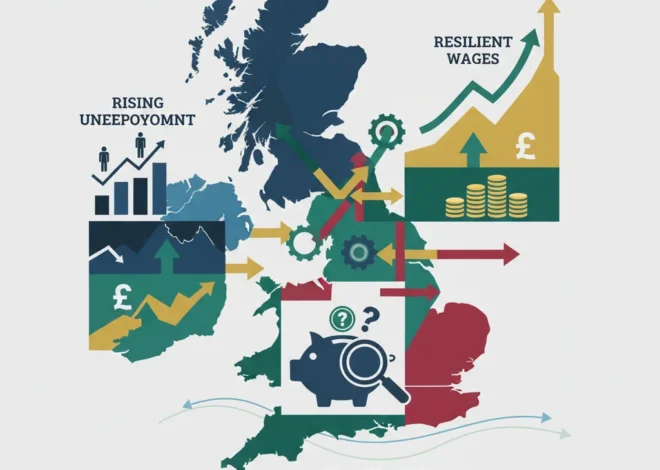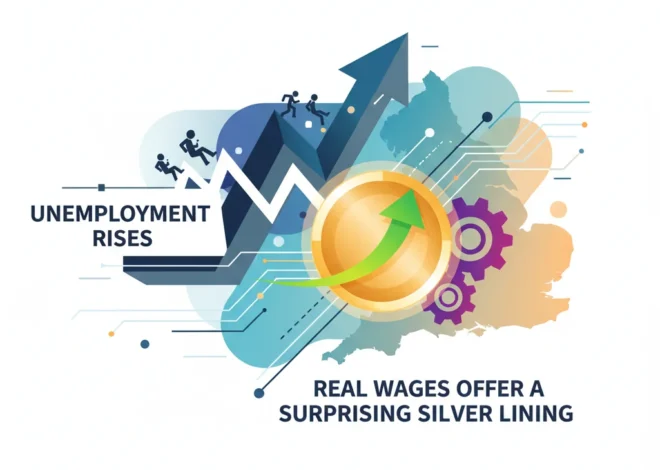
UK’s £420M Industrial Lifeline: A Necessary Boost or a Drop in the Ocean Amidst Energy Profit Debates?
The United Kingdom’s industrial heartland, the bedrock of its manufacturing prowess, has been navigating a treacherous economic landscape. For sectors like steel, chemicals, and paper, where energy isn’t just a utility but a primary raw material, the recent surge in global energy prices has been less of a headwind and more of a hurricane. In response, the government has unveiled a significant intervention: a £420 million reduction in energy bills for these Energy Intensive Industries (EIIs). But is this a decisive lifeline capable of securing their future, or merely a temporary patch on a much larger structural problem?
This move comes at a time of intense public and political debate, juxtaposing the struggles of heavy industry against the backdrop of what trade unions have labelled “obscene” profits in the energy sector. For investors, finance professionals, and business leaders, this policy decision is a critical data point, revealing the government’s priorities and the complex interplay between industrial strategy, energy markets, and the broader UK economy. In this analysis, we will delve into the mechanics of this support package, dissect the multifaceted reactions from key stakeholders, and explore the wider implications for investing, economic stability, and the future of British industry.
Unpacking the £420 Million Intervention
At its core, the government’s support package is an extension and enhancement of the existing Energy Intensive Industries (EII) exemption scheme. This isn’t a direct cash handout; rather, it’s a targeted reduction in specific levies that these industries are required to pay. EIIs, which include over 300 businesses in sectors critical to the UK’s supply chain, will now see their exemption from certain renewable energy levies and network charges increase from 85% to 100%.
The goal is twofold. First, to provide immediate relief and prevent a potential wave of shutdowns or production curtailments that could have a devastating ripple effect across the economy. Second, to level the playing field. Industrial leaders have long argued that UK firms face higher ancillary energy costs compared to their European counterparts, putting them at a significant competitive disadvantage. This policy aims to close that gap, making the UK a more attractive place for industrial investing and long-term operations. The total value of this relief, pegged at £420 million, is a substantial figure, yet its true impact can only be measured against the colossal scale of the energy cost crisis these businesses are facing.
A Fractured Response: Industry Relief vs. Union Outrage
The announcement has been met with a spectrum of reactions, highlighting the deep divisions in how different parts of society view the current economic challenges. While industry bodies have offered a cautiously optimistic welcome, labour unions have been scathing in their criticism of the wider context.
UK Steel, a prominent voice for one of the most energy-hungry sectors, acknowledged the move as a positive step. However, their statement that the government “could have gone further” (source) underscores the feeling that this support, while welcome, may not be sufficient to fully insulate them from market volatility or ensure long-term global competitiveness. For them, this is about survival and creating a stable environment for future capital investment in decarbonisation and modernisation.
On the other end of the spectrum, the GMB union launched a blistering attack, not on the support for industry, but on the perceived imbalance in the energy market. Their focus is on the record-breaking profits posted by energy giants during the same period that industrial firms and consumers have been struggling. For instance, major energy firms reported multi-billion pound profits, fuelling arguments for a more substantial windfall tax. The union’s perspective frames the issue as one of corporate greed and regulatory failure, suggesting that the government is applying a bandage to a wound that requires major surgery on the energy market itself.
To clarify these differing viewpoints, the following table breaks down the core arguments of each key stakeholder:
| Stakeholder | Stance on the £420m Policy | Core Rationale & Broader Argument |
|---|---|---|
| UK Government | Positive / Necessary | A targeted intervention to protect vital industries, maintain competitiveness, and prevent job losses in foundational sectors of the economy. |
| UK Steel (Industry) | Cautiously Positive | A welcome relief that helps level the playing field with international competitors, but more comprehensive, long-term support is needed for stability and investment. |
| GMB Union (Labour) | Critical of Context | The support for industry is overshadowed by the government’s failure to adequately tax the “obscene” profits of energy producers, which they see as the root cause of the crisis. |
Implications for Investors and the Financial Markets
For those involved in finance and investing, this government action sends several important signals that could influence portfolio strategy and risk assessment.
Firstly, it’s a clear indicator of the government’s willingness to backstop strategically important industries. Investors holding stock in UK-based steel, ceramics, or chemical companies can view this as a de-risking event. The policy directly props up margins and reduces the immediate threat of insolvency, potentially providing a short-term boost to the stock market valuation of these firms. It suggests a political floor under the sector, which could make it more attractive for value investors looking for cyclical recovery plays.
Secondly, the fierce rhetoric from unions and the public pressure regarding energy profits puts the energy sector under an intense political spotlight. For investors in major oil and gas companies, this increases regulatory and political risk. The debate around windfall taxes is far from over, and any future government could be pressured into implementing more punitive measures. This creates uncertainty around future earnings and dividend policies, which are key drivers of their stock performance. The act of trading energy stocks now requires a keen eye on Westminster as well as global commodity markets.
Thirdly, the situation highlights the immense capital required for the UK’s green transition. The support for EIIs is, in part, to keep them viable long enough to invest in decarbonisation. This opens up a vast new frontier for green finance. There will be a growing demand for green bonds, sustainability-linked loans, and other innovative financial instruments to fund this transition. Banks and financial institutions that specialise in this area of banking are poised for significant growth. The underlying economics of heavy industry are being fundamentally reshaped, and the financial sector will be both a driver and a beneficiary of this change.
The Global Wealth Matrix: Navigating Risk, Law, and Culture in the New Economy
The Broader Economic Context: A Delicate Balancing Act
This policy cannot be viewed in a vacuum. It is a single move in a multi-dimensional chess game being played out across the UK economy. The government is simultaneously battling inflation, managing a high national debt, and trying to spur economic growth. Providing subsidies to one sector, however vital, means that money cannot be spent elsewhere. It represents a trade-off.
The core challenge is that high energy costs are a symptom of global market dynamics, including geopolitical instability and the post-pandemic demand surge. While domestic policy can shield certain sectors, it cannot fundamentally alter these global realities. This is why the debate over energy security and independence has become so prominent. A long-term solution requires a multi-pronged strategy encompassing accelerated renewable energy deployment, investment in nuclear power, and enhanced energy efficiency measures. These are multi-decade, trillion-pound projects that require a stable policy environment to attract the necessary private capital.
The £420 million relief package is, therefore, a necessary but insufficient condition for the long-term health of UK heavy industry. It buys time. What happens during this borrowed time will be critical. Will it be used by industry to accelerate investment in efficiency and green technology? Will the government use it to develop a coherent, long-term industrial and energy strategy? The answers to these questions will determine whether this is a successful intervention or a costly delay of the inevitable.
Beyond the Trillion-Pound Ledger: Why Afua Kyei's Powerlist Triumph Signals a New Era in Finance
Conclusion: A Critical Juncture for British Industry
The government’s £420 million energy bill reduction for Energy Intensive Industries is a significant and complex development. It is a pragmatic response to an immediate crisis, offering a vital financial cushion to sectors that form the backbone of the UK’s manufacturing supply chain. For investors, it alters the risk profile of both industrial and energy stocks, while for business leaders, it provides some much-needed breathing room.
However, the polarised reactions from industry and unions reveal that this solution addresses a symptom, not the root cause. The fundamental issues of volatile energy markets, the immense cost of the net-zero transition, and the UK’s international competitiveness remain. This policy is a crucial defensive manoeuvre, but the long-term prosperity of Britain’s industrial base will depend on the offensive strategies that follow. It will require a concerted effort of public-private partnership, massive investment in new technology, and a stable policy framework that turns today’s challenges into tomorrow’s competitive advantages.


